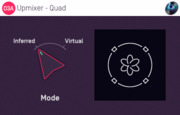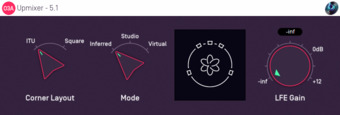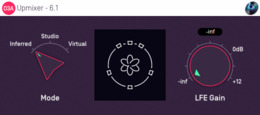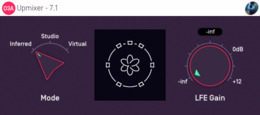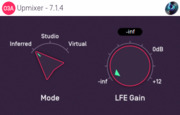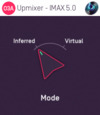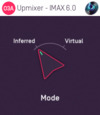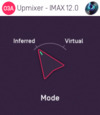
O3A Upmixers
The O3A Upmixer plugin library is a set of plugins that can be used to convert mixes in various formats into 2D or 3D O3A.
Speaker layout upmixers are available for various standard speaker layouts. Other plugins handle stereo upmixing, ambience generation, and injection or upmixing of some other formats. The plugins are:
- O3A Upmixer - 5.1
- O3A Upmixer - 6.1
- O3A Upmixer - 7.1
- O3A Upmixer - 7.1.2 (Dolby Atmos) and 7.1.4
- O3A Upmixers - Auro-3D 9.1, 10.1, 11.1 and 13.1
- O3A Upmixers - IMAX 5.0, 6.0 and 12.0
- O3A Upmixer - 22.2
- O3A Upmixer - Quad
- O3A Upmixer - Cube
- O3A Upmixer - Stereo
- O3A Upmixer - Coincident Microphone
- O3A Injector - First Order
- O3A Injector - N3D
- O3A Mono Ambience
- O3A Stereo Ambience
These are VST2 or AAX plugins for macOS (10.14 to 13.5) or Windows (10 or 11, 64bit Intel). They can be hosted in some Digital Audio Workstations (DAWs) that can handle tracks with sufficiently high channel counts. Options include Reaper, Pro Tools (Ultimate or Studio), Pyramix and Max/MSP. These plugins use the SN3D higher order ambisonic (HOA) convention, at third order, which needs 16 channels. The exact channel counts needed for individual plugins are listed below in the Plugins section. Not all plugins are supported in AAX.
We use some free software, data and artwork in these products. Before purchase, please check the technical requirements and license agreement. Prices include VAT where applicable. EU VAT is normally charged at your local rate using the MOSS VAT system. By beginning the payment process you agree to be bound by our terms and conditions.
Why Upmix?
There are lots of good reasons to upmix. For instance, you might want to add some stereo or 5.1 recordings into a 3D O3A mix.
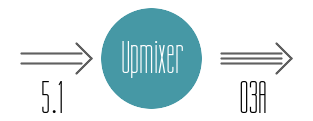
You might also want to edit an existing mix. For instance, you can take a 5.1 mix, upmix it to O3A, rotate it and add some O3A reverb, and then decode it back to 5.1.
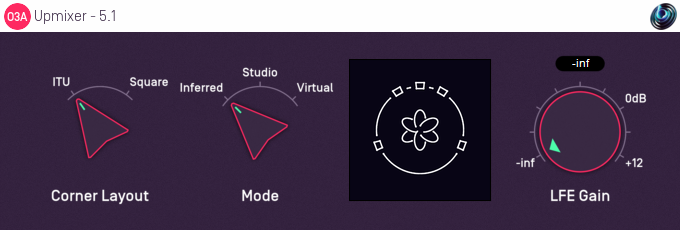
Multichannel loudspeaker upmixers are provided for quad, cube, 5.1, 6.1, 7.1, 7.1.2, 7.1.4, Auro-3D and 22.2.
How Does This Work?
The multichannel upmixers support two or three modes. In "Virtual" mode, each speaker channel is simply panned into place, like a "virtual speaker".
More sophisticated modes are "Inferred" or "Studio", which use a patented technique to help place sounds more accurately when they were panned between speakers in the original mix.
In all these modes, we use passive processing techniques, so we don't disrupt the sound's character.
Stereo Upmixing
The main stereo upmixer O3A Upmixer - Stereo presents material as a "stage" that can be moved around the scene. It allows you to control the stereo width smoothly, so you can swing the stereo image out from a single point to ultra-wide.
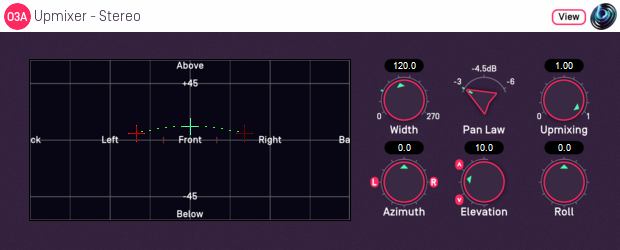
Stereo Ambience
If you don't want a strongly defined stereo image, you might want to try the O3A Stereo Ambience plugin. This spreads the left and right channels out over a whole region, so a complete 3D ambience can be generated from just a stereo input. This is often useful in Virtual Reality to handle music or other non-diegetic material. There is also a mono version of this plugin.
Other Tools
Some more plugins are included, to help introduce other material into 3D O3A mixes. There is support for another ambisonic format (HOA using N3D in ACN order), for 2D coincident microphone systems like the Zoom H2 or Double M/S, and a processor to help when injecting first order material.
Loudspeaker Upmixers
O3A Upmixer - 7.1.2 (Dolby Atmos)
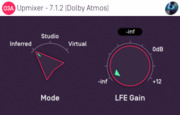
I/O: 10 in, 16 out
This plugin converts 7.1.2 surround into a 3D O3A mix.
O3A Upmixer - Auro-3D 9.1
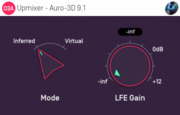
I/O: 10 in, 16 out
This plugin converts Auro-3D 9.1 surround into a 3D O3A mix.
O3A Upmixer - Auro-3D 10.1
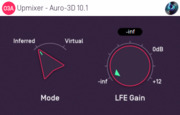
I/O: 11 in, 16 out
This plugin converts Auro-3D 10.1 surround into a 3D O3A mix.
O3A Upmixer - Auro-3D 11.1
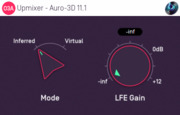
I/O: 12 in, 16 out
This plugin converts Auro-3D 11.1 surround into a 3D O3A mix.
O3A Upmixer - Auro-3D 13.1
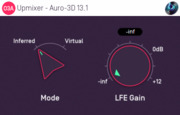
I/O: 14 in, 16 out
This plugin converts Auro-3D 13.1 surround into a 3D O3A mix.
O3A Upmixer - Cube
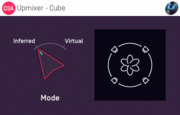
I/O: 8 in, 16 out
This plugin converts audio targeting a cube of speakers into a 3D O3A mix.
O3A Upmixer - 22.2
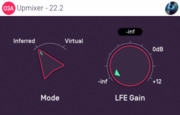
I/O: 24 in, 16 out
AAX: not supported
This plugin converts Hamasaki 22.2 surround into a 3D O3A mix.
Stereo Upmixing
O3A Upmixer - Stereo
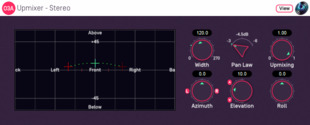
I/O: 2 in, 16 out
This plugin spreads a stereo image dynamically over a region of space.
Ambience Plugins
O3A Stereo Ambience

I/O: 2 in, 16 out
This plugin spreads a stereo signal in all directions, or over regions on the left and right.
Other Formats
O3A Injector - First Order

I/O: 4 in, 16 out
This plugin applies some gentle processing to first order ambisonic material that sometimes helps when injecting it into a third order O3A mix.
O3A Upmixer - Coincident Microphone
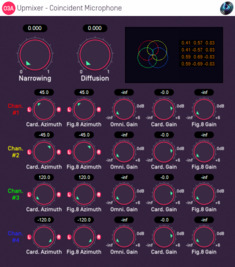
I/O: 4 in, 16 out
This plugin processes recordings from 2D coincident microphone systems with simple polar patterns, such as the Zoom H2 or Milab SRND 360, or Double M/S systems.
It converts to first order ambisonics and then to O3A, applying some gentle processing if required.
O3A Injector - N3D

I/O: 16 in, 16 out
This plugin converts Higher Order Ambisonic (HOA) material using the N3D convention (in ACN) to the SN3D convention used by O3A.
Technical Requirements
Please check everything is okay here before purchasing software.Operating System
Supported versions of Microsoft Windows are 10 or 11, 64bit Intel.
Supported versions of Apple macOS are 10.14 to 13.5, 64bit Intel or Apple Silicon.
VST Host
The VST plugins require a VST 2 host with shell plugin support.
These plugins do not work with all VST 2 hosts. One reason for this is that the O3A plugins need large numbers of channels on their input or output busses. Check the individual plugins for the channel counts they need, but all of the O3A plugins need at least 16 channels on each track, and some need more. Also, at the time of writing VST 2 shell plugins are not supported in Nuendo or Cubase.
AAX Host
The AAX plugins require Pro Tools Ultimate or Studio.
Due to channel and stem restrictions, not all plugins are supported in AAX. Please see the plugin descriptions for details.
PC Hardware
Please check your PC meets the following requirements:
- Intel Core i5 CPU or better, or Apple Silicon.
- 200MB of free disk space.
Permissions
You'll need administrator permissions while installing on Windows. The software probably won't install properly using a "restricted" account.
Internet Connection Required
This software requires an Internet Connection for license activation and verification.
Successful license verification isn't required every time you use the software, but it is needed during installation and needs to succeed once every couple of weeks to keep the license fresh.
The license can be "revoked" to remove it from one machine so it can be moved on to another. You should also do this if you're updating your system in case the machine appears to have changed identity.

